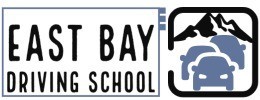According to our surveys from 1,500 students in 2022,2023:
- 90% of test takers pass the CA DMV Written Test on their first try with the best DMV test prep! But only 32% pass by merely reading the CA DMV handbook.
We are confident in our Written Test Preparation methods. We provide:
- Over 225 DMV practice questions and have categorized them into logical sections to help you study. Trust us, you want lots of DMV practice questions to get a feel for the format.
- Mock DMV Test Formats
- Explanations to every answer so that you understand the principal behind every question. Your DMV test prep should help you understand the actual fundamentals of driving.
- Our Written Test Prep site cost $0 until January 2024. (There are no Ads)
- The test preparation takes 2-5 hours. Trust us, the prep time will save you from wasting time retaking the test multiple times.
The bottom line – After studying 200+ DMV Practice Questions, you’ll surely ace the 46 question DMV Written Test.
1. DRIVE TEST PREP - What to Expect
Your driving test will last about 15-20 minutes. The test consists of basic maneuvers you will encounter while driving such as: left and right turns, stops at controlled and uncontrolled intersections, straight line backing, lane changes, and driving in neighborhoods and main roads.
2. Preparing for Your Driving Test?
Practice all the driving maneuvers listed in the Safe Driver checklist below. The DMV examiner is there to make ensure you have demonstrated you can handle your vehicle in regular traffic situations, not to trick you. During your driving test, the examiner will note how you obey the rules of the road and traffic signs and/or signals. He/she will note other areas in which you may need improvement.
Practice these tips to improve your driving skills:
- Steer smoothly at all times.
- Accelerate smoothly. Gradually add pressure to the acceleration pedal.
- Stop the vehicle gently. Know where to stop. Be aware of crosswalks. If your view is blocked at a crosswalk, move forward carefully and look both ways before entering the intersection.
- Always obey the posted speed limits. If needed, reduce your speed to adjust for existing weather, road, and other traffic conditions. Remember to turn on your lights if you need to use your windshield wipers in poor weather conditions.
- Follow at a safe distance. Use the three-second rule. Increase your following distance in bad weather or poor visibility.
- Know what the traffic signals mean and obey them at all times.
- Always use the proper lane. Turn from the correct lane into the correct lane.
- Signal for all lane changes and turns.
- Always look for potential hazards (scan). Check your mirrors frequently. Always look over the proper shoulder before making lane changes or pulling away from the curb.
- Drive defensively. Anticipate another driver’s errors.
- If you are unsure about your driving skills, review the following DMV publications: Parent-Teen Training Guide (PDF) and the Let’s Go for a Drive DVD, (available at your local DMV office or online at: www.dmv.ca.gov ). These publications provide detailed instruction to correctly perform the driving maneuvers required on a driving test, as well as the laws and rules of the road and safe driving practices.
3. Other Test Information
If you have any questions, you may ask the examiner before your driving test begins. During the test, the examiner will ask you questions or give you directions, but he/she will not engage in general conversation.
4. Test Vehicle Requirements
The vehicle you use for your driving test must be safe to drive. Before the test, the examiner checks for:
- The rear plate must show current registration.
- Both front and back turn signal lights and working brake lights.
- A working horn designed for the vehicle.
- Tires with no bald spots.
- Adequate brake pressure (you will be asked to step on the brake pedal to see if it works properly).
- A driver’s side window that rolls down.
- A windshield that allows a full unobstructed field of vision.
- Two side view mirrors
- Driver and front passenger doors that open from both the inside and outside.
- A secured glove compartment door so it doesn’t open during the test.
- Working safety belts, if the vehicle was manufactured with safety belts.
- Working emergency/parking brake.
5. Financial Responsibility
You must show that your vehicle is properly insured before the driving test begins (or the test will be postponed) by providing one of the following:
- A document with the liability insurance policy or surety bond number.
- An Assigned Risk insurance card with the name of the assigned insurance company, file number, and current coverage dates.
- Current insurance binder or copy of an insurance policy signed or countersigned by an insurance company representative.
- DMV-issued certificate of self-insurance or acknowledgment of cash deposit.
- Written confirmation from the insurer that the person is insured.
6. After Your Driving Test
Learning to drive safely does not end with your driving test. Your license means you have met the driving test requirements. However, in everyday driving you will have to deal with many situations and problems you did not encounter on your driving test. The best ways to deal with unexpected situations is to always use the same, safe driving habits and the responsible attitude you demonstrated on your driving test.
DMV Mock Test and Common Pitfalls
Each mock test is about 15 minutes long. These Mock Tests are one of our student’s favorite exercises and it includes common pitfalls such as:
1. Checking Blind Spots: Most examiners do check their right spot when turning right, and that is a critical error!
2. Turning right on red: The second most common mistake is to turn right at a red light incorrectly.
3. Following Distance: Although following distances is not a critical error from the CA DMV, it is often marked down as a minor error.
4. Abrupt Stops: Practice defensive driving techniques by forming a protective bubble. If cars suddenly merge into your lane, you will have sufficient reaction time to adjust.
5. Bike Lanes: For right turns, you must check and then merge into the bike lanes at the dashed lines, before turning right.
6. Full Stops: You must come to a full stop at a red light, stop line or stop sign. Even if the vehicle in front of you doesn’t come to a full stop.
7. Unprotected Left Turn: If it’s a rounded green circle and you are turning left, you must yield to incoming traffic and pedestrians crossing the cross walk before turning left.
Focus Areas To Practice for the Behind-the-Wheel test
Based on over 2,000 students in the past 2 years, we’ve taken their feedback to formulate the following DMV mock test. We’ve adapted the DMV test rubric to help students train and focus for the behind-the-wheel test. Call us with your questions.
| TOPIC | Score (1,2,3-high) | Total Possible | Notes |
| The Driver | |||
| Defensive Driving (Safe, Courteous, Active Mind) | 3 | ||
| SIPDE (Scan, Identify, Predict, Decide, Execute) | 3 | ||
| PreDrive checklist | |||
| Check the vehicle’s Windshields, Mirrors, Turn Signals, Brake Lights, Tires, Foot Brake, Horn | 2 | ||
| Emerency/parking brake, wipers, defroster, flasher, headlights, Seat Belts | 2 | ||
| Critical Driving Errors | 3 | ||
| Strike object/curb, disobey traffic sign, disobey safety vehicles | 3 | ||
| Dangerous manuever, Speed, Phone usage, Lane violation | 3 | ||
| Parking Lot Driving | |||
| Traffic Check, Speed | 3 | ||
| FWY (not on the DMV test) | |||
| Entering-Merge, Lane Use, Exiting | 3 | ||
| Traffic Check, Signal, Speed, Spacing, Lane Position | 3 | ||
| Intersections | |||
| Through, Stop, Start | 3 | ||
| Trafafic Check, Speed, Hield, Unnecessary Stop, Fulll Stop, Limit Line, Decelerate | 3 | ||
| Urban/Residential | |||
| Traffic Check, Speed, Spacing, Lane Position | 3 | ||
| Backing | |||
| Traffic Check, Signal, Speed, Parallel, Control/Turning | 3 | ||
| Lane Change | |||
| Traffic Check, Signal, Speed, Spacing, Steering Control | 3 | ||
| Turns | |||
| Approach, Stop, Turn, Complete | 3 | ||
| Traffic Check, Signal, Decelerate, Yield, Lane Use, Unnecessary Stop | 3 | ||
| Wheels Straight, Avoid Wide/Short, Signal, Speed | 3 | ||
| Improvement Checklist | |||
| Stops | |||
| Full Stops behind Lines or provide adequate space from other vehicles | 3 | ||
| Make Smooth Safe Stops | 3 | ||
| Lane Use | |||
| Begin and End turns in correct Lane | 3 | ||
| Do not make turns too wide/short | 3 | ||
| Keep in Center Lane | 3 | ||
| Enter Bike Lane before Right Turn | 3 | ||
| Use 2-way left turn appropriately | 3 | ||
| Do not drive too far to the right | 3 | ||
| Speed | |||
| Drive at posted speed limit | 3 | ||
| Do not drive too slow/fast for situations | 3 | ||
| Traffic Check | |||
| Look both ways and ahead when approaching intersection | 3 | ||
| Vehicle Control | |||
| Keep adquate space custion between vehicles | 3 | ||
| Apply brakes smoothly | 3 | ||
| Do not under/over steer | 3 | ||
| Yielding | |||
| Accept right-of-way without causing confusion | 3 | ||
| Yield to oncoming traffic when appropriate | 3 | ||
| Total Possible | 100 |


